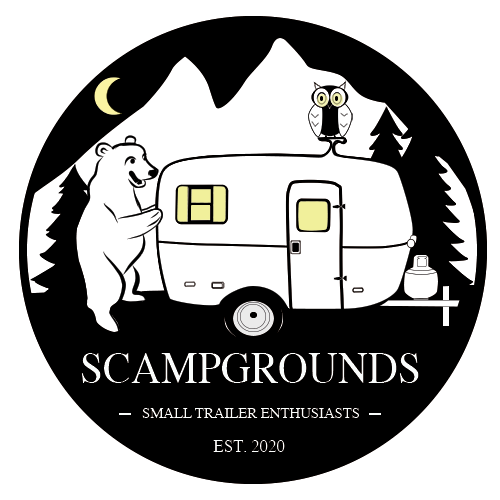Whitewater Preserve (Palm Springs Area) February 12th – 14th, 2024 (2 nights)
https://scampgrounds.com/wp-content/themes/osmosis/images/empty/thumbnail.jpg 150 150 gavin gavin https://secure.gravatar.com/avatar/99f9cd14e6ca957f921a5ace7d1dcdf0fccde566155f0e4da610ff0b7f10e2b0?s=96&d=mm&r=gWhitewater Preserve (Palm Springs Area)
February 12th – 14th, 2024 (2 nights)
Located only about 20 minutes northwest of Palm Springs, Whitewater Preserve (2,851 acres) is situated in a beautiful canyon with spectacular views of the mountains and Whitewater River. This preserve is just one of many throughout the State of California managed by the Wildlands Conservancy. Whitewater’s campground, park, and Visitor Center and Ranger station were built on the foundation of the historic Whitewater Trout Hatchery (which closed in 2006).
We probably never would have heard about this place had it not been for our friends Colleen and Perry. They roll their Oliver travel trailer out of their home base in Ontario, Canada every Fall and often make Palm Springs and its surrounds their winter basecamp. Once they discovered Whitewater Preserve, they told us we had to come and visit. So, we organized a two day trip to meet and explore Whitewater Preserve and its trails. There are no fees at this private preserve and camping is free (call to make reservations (760) 325-7222). There is a large grass field for tent campers and a parking lot for trailers (and day use). They have a 20 foot trailer length limit, but the rangers were flexible with our friends’ 24’ Oliver trailer (they were able to park across multiple parking spaces lengthwise between 5 p.m. and 8 a.m.). The park is open seven days a week from 8 a.m. to 5 p.m. (free admission). Camping is also free ($0/night). We chose to stay two nights.
This preserve doesn’t seem very well known and there were not many people here during the week. The winter weather was perfect (pleasant days in the high 60’s/low 70’s and cool nights in the high 30’s). We and our friends were the only campers the first night. A car camper and a van camper shared the large parking lot with us on the second night. There are water spigots (potable water) in the campground, but no electricity, sewer, or trash services. Numerous trails originate or are very close to the campground and offer spectacular hikes. Some of the trails follow the river and others climb high onto ridgelines overlooking the valley. One of the trails leads to the Pacific Crest Trail. There are also nice meandering paths along some of the ponds within the park. The park puts on many scheduled events, including the morning ornithology tour we went on. A biologist led the bird watching group and took us all on a long trail walk, pointing out and naming different birds along the way. There are many species of birds at which to gaze. We noticed the binoculars of choice among this bird group were those produced by Swarovski Optics.
The sky became pitch black soon after the sun set behind the mountains. The stars came alive and we could hear a symphony of sounds produced by the frogs and other animals along the river. This is one of the special treats offered to campers who are allowed to stay in the park after it closes to the general public at 5 p.m. There are also plenty of other animals that might be roaming the campground! The area is also home to bighorn sheep, California black bears, coyotes, mule deer, raccoons, roadrunners, mountain lions, bobcats, and coyotes.
After spending the first day hiking around Whitewater Preserve, we joined our friends in Palm Springs to enjoy some of what this iconic city has to offer. We did a very special hike at Tahquitz Canyon. On the Agua Caliente Indian Reservation, visitors (for a $15 fee) can enjoy a self-guided hike up a scenic canyon to a seasonal 60-foot waterfall (swimming is allowed). The path also features rock pictographs made long ago by indigenous peoples. After the moderate two mile hike, we had a great lunch at Low Desert Modern Mexican restaurant. We ended our day in Palm Springs before returning to Whitewater Preserve visiting the Agua Caliente Cultural Museum ($10/person). This museum is dedicated to showcasing the culture of the Agua Caliente People. There are some very interesting presentations which feature projection systems to create a very immersive experience (highly recommended).
Although this was only a short two night stay, Whitewater Preserve was just what we needed to rejuvenate our souls after being in the city for the past several months (a lengthy time for us). John Muir once wrote: “I only went out for a walk and finally concluded to stay out till sundown, for going out, I found, was really going in.”
Disclaimer: You will get the same great Amazon price by clicking on the links here compared to buying directly on Amazon, but by buying here you will also be supporting the continuation of this website as we get a small commission from each sale. These are products and procedures we use for our own Scamp that we selected and developed from our own research and experiences. However, we do not endorse any specific product and cannot guarantee that the products we use are exemplary and the procedures we use are complete, accurate, detail the correct recommended procedures, or apply to your model small travel trailer. It’s always best to double check with your manufacturer or operation manuals to ensure you are doing everything correctly.




























































































































































































































































































































































































